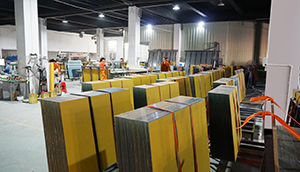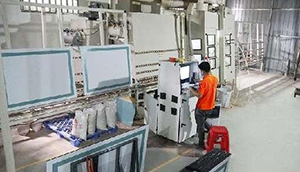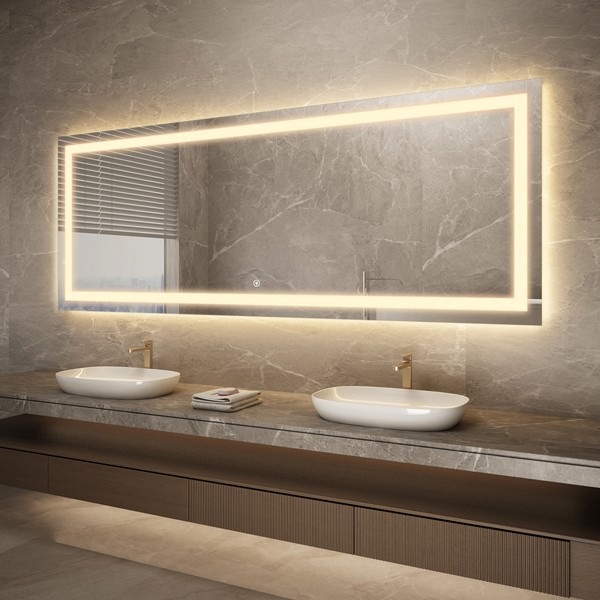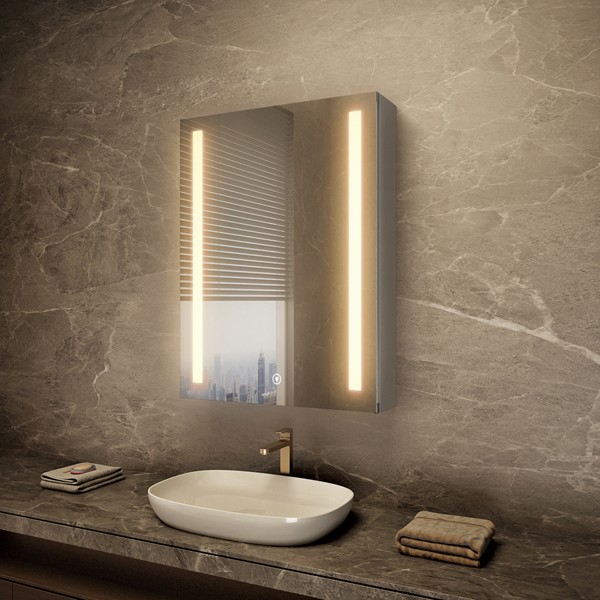Mirrors are a crucial aspect of our daily routine and are used multiple times throughout the day. Whether it's for applying makeup or shaving in front of the bathroom mirror, checking for traffic behind our vehicles using the rearview mirror while driving, or dentists using mirrors to inspect our teeth during dental procedures.
Ever curious about the significance of mirrors and their manufacturing process? Join us in today's article as we delve into the fascinating history behind them.

Mirrors in History
Ancient Times
Discover the origins of mirrors as far back as 8,000 BC, when natural materials like obsidian stone were first used. These initial mirrors simply consisted of polished stones that could reflect a basic image. Evidence from Anatolia (present-day Turkey) suggests that these polished stones date back to around 6000 BC.
Around 4000 BC, mirrors made of metal (copper) were discovered in Mesopotamia (present-day Iraq). These mirrors had polished surfaces that were more reflective than the earlier stone ones.
During the time period of 3,000-2,000 BC, bronze mirrors were created in China and Egypt.
Medieval Period
In the medieval period, a new type of mirror was created - one that used metal-coated glass.
During the first century AD, the discovery of metal-coated glass mirrors in present-day Lebanon was made by archaeologists. The Romans went on to develop a method for coating blown glass with lead, but it was China that greatly improved the process by using mercury amalgams as early as 500 AD, as they offer a superior reflection compared to lead.
Discover the origins of Venetian glass mirrors, which originated in the 14th century. These mirrors were renowned for their exceptional clarity and craftsmanship. Skilled artisans on Murano Island perfected the process of coating glass with tin and mercury, resulting in even sharper reflections. By the 16th century, Venice was renowned for its production of these high-quality, mercury-coated mirrors.
Modern Era
Discover the origins of modern mirrors with Justus von Liebig's 1835 invention of the silvering process. By coating glass with a thin layer of silver, this revolutionary technique greatly enhanced the reflective properties and overall quality of mirrors.
Discover the 20th century's advancement in mirror making technology as it transitioned from silver to aluminum coating. The use of aluminum has become prevalent in creating modern mirrors due to its strong bonding with glass and superb reflective capabilities.

What Are Mirrors Made Out Of?
High-quality mirrors typically use either float glass or tempered glass, which are both known for their strength and flatness. The transparency, rigidity, and smooth surface of these types of glass make them ideal as a base material.
To make the glass reflective, a metal coating is typically applied. Popular options for this coating include mercury, silver, and aluminum, as they have exceptional reflective qualities. Gold is also occasionally used.
The merchant may also suggest using supplementary materials if needed:
-
Copper is often added as a protective layer over the silver or aluminum coating, providing extra durability.
-
This silver is non-toxic and used in modern mirrors for safety and environmental reasons.
Another type of mirrors is made from acrylic, a lightweight and durable plastic material. These mirrors are slightly less reflective than traditional glass mirrors.
How Were Mirrors Made in the Past?
Polished Stone and Metal
Ancient mirrors were crafted from polished stones, such as obsidian. Typically used by the wealthy, these small and heavy mirrors serve as some of the earliest examples.
During the time of 2000 BC in China and 2900 BC in Egypt, individuals used bronze to create mirrors. These mirrors were typically circular, with wooden, metal, or ivory handles, and were polished to achieve a reflective surface.
Venetian Glass Mirrors
During the Renaissance, skilled artisans in Venice produced top-notch glass mirrors by using a blend of tin and mercury as backing, resulting in highly reflective surfaces. The craftsmen closely guarded their methods to retain control over the mirror industry.
Glass Mirrors with Reflective Coating
Improve the quality and affordability of mirrors with the technique of silvering, developed by German chemist Justus von Liebig in the early 19th century. This involved applying a thin layer of silver using silver nitrate to the back of a glass
This sheet is revolutionizing the mirror-making industry. For clarity, we have provided a simple timeline:
|
Time Period |
Mirror Type |
Materials Used |
|
Ancient Times |
Obsidian Stone |
Obsidian |
|
2900 BC |
Bronze Mirrors |
Bronze, handles |
|
Renaissance |
Venetian Glass Mirrors |
Glass, tin, mercury |
|
1835 |
Silvered Glass Mirrors |
Glass, silver |
Discover the evolution of mirror-making, from basic polished stones to advanced glass-backed mirrors, through these methods.
How are mirrors created in modern times?
Mirrors are now produced by coating one side of the glass with a reflective metal layer. A layer of silver is applied to create a silver mirror, using a technique called the silvering process.
The process of silvering involves cleaning and polishing the glass with mineral-free water to prevent damage to the metal layer. To prepare the surface for coating, tin chloride is applied, ensuring the silver nitrate solution adheres to the glass properly.
A light mist of ammonia and silver nitrate is gently sprayed onto the glass, causing a chemical reaction that deposits a delicate silver layer onto the surface. To ensure long-lasting shine, a copper-free coating is carefully applied to prevent any tarnishing. Finally, multiple layers of paint are added for extra protection against scratches and unevenness. This type of mirror, also known as a copper-free silver mirror, offers superior corrosion resistance and is environmentally friendly, making it ideal for use in bathrooms.
Consider using aluminum coating instead of silver for modern mirrors. Not only is aluminum cost-effective, but it also provides high reflectivity, making it a popular choice among manufacturers.
For certain scientific research and specialized applications, mirrors may feature dielectric coatings such as silicon oxides or silicon nitrides. These coatings improve properties such as reflectivity and durability.

What Methods Are Used to Produce Mirrors?
The reflective layer of mirrors is typically created through chemical reactions. Most modern methods of mirror production involve either a silver or aluminum layer.
Let's explore the silvering and aluminizing processes.
Silvering Process
-
Silver Nitrate Reaction: The process begins when silver nitrate reacts with reducing agents such as glucose or ammonia.
-
Reflective Silver Layer: The reaction results in a thin layer of metallic silver being deposited on the glass, giving it a reflective quality.
-
Protection: To prevent tarnishing and increase longevity, a layer of copper is often added to protect the silver and maintain its shine.
Aluminizing Process
-
Vacuum Deposition:Another method involves adding an aluminum coating to the glass, which is done by placing the glass in a vacuum chamber.
-
Evaporation: Aluminum is vaporized in the chamber and then deposited onto the glass surface as it cools.
-
Strong Adhesion: Ensure that the coating is evenly distributed, resulting in long-lasting and highly reflective mirrors coated with aluminum.
Frequently Asked Questions
What is the metal composition used in mirrors?
Silver and aluminum are commonly chosen for reflective coatings on mirrors. Silver is highly reflective, and aluminum offers a cost-effective alternative. The best metal for the coating depends on the specific application.

Do you want to learn about the production of mirrors throughout history?
In the past, mirrors were crafted by smoothing and polishing metal sheets made of materials like bronze or copper. This was a time-consuming task, making these mirrors a luxury item mainly used by the upper-class and those in power.
 Shanghai Divas Glass Co.,Ltd
Shanghai Divas Glass Co.,Ltd
